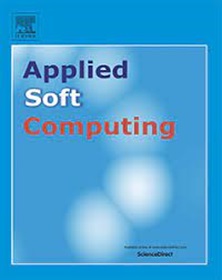Multiscale spatio-temporal feature fusion based non-intrusive appliance load monitoring for multiple industrial industries
IF 6.6
1区 计算机科学
Q1 COMPUTER SCIENCE, ARTIFICIAL INTELLIGENCE
引用次数: 0
Abstract
The appliance types and power consumption patterns vary greatly across different industries. This can lead to unstable identification results of traditional appliance load monitoring methods in different industries. A non-intrusive appliance load monitoring (NIALM) method for multiple industries based on multiscale spatio-temporal feature fusion has been proposed. Firstly, the ConvNeXt Block with efficient channel attention has strong feature extraction capability. Spatial features of appliance state changes and micro-variations generated during operation can be extracted from mixed industrial load information by it. Meanwhile, the bidirectional gated recurrent neural network is used to learn the bidirectional dependencies of the load data, obtaining temporal features. Then, the multi-scale feature extraction module is used to extract temporal and spatial features from different depths of the network layers. And the extracted multi-scale temporal and spatial features are fully integrated. Finally, the proposed model is optimized using the Stochastic Weight Averaging method. During the training process, a certain number of model weights are randomly averaged, which can improve the model's generalization ability and identification accuracy. The experiment was conducted on six different industries. The evaluation indexes such as accuracy, F1 score, and Wasserstein distance are also used to verify the effectiveness and superiority of the method.
基于多尺度时空特征融合的多工业行业非侵入式家电负载监测
不同行业的电器类型和用电模式差异很大。这可能导致传统的家电负载监测方法在不同行业的识别结果不稳定。本文提出了一种基于多尺度时空特征融合的多行业非侵入式家电负载监测(NIALM)方法。首先,具有高效通道注意的 ConvNeXt Block 具有强大的特征提取能力。它可以从混合的工业负荷信息中提取设备状态变化和运行过程中产生的微变化的空间特征。同时,利用双向门控递归神经网络学习负载数据的双向依赖关系,获得时间特征。然后,利用多尺度特征提取模块从不同深度的网络层中提取时间和空间特征。并将提取的多尺度时间和空间特征进行充分整合。最后,利用随机加权平均法对所提出的模型进行优化。在训练过程中,对一定数量的模型权重进行随机平均,从而提高模型的泛化能力和识别精度。实验针对六个不同行业进行。准确率、F1 分数和 Wasserstein 距离等评价指标也用于验证该方法的有效性和优越性。
本文章由计算机程序翻译,如有差异,请以英文原文为准。
求助全文
约1分钟内获得全文
求助全文
来源期刊

Applied Soft Computing
工程技术-计算机:跨学科应用
CiteScore
15.80
自引率
6.90%
发文量
874
审稿时长
10.9 months
期刊介绍:
Applied Soft Computing is an international journal promoting an integrated view of soft computing to solve real life problems.The focus is to publish the highest quality research in application and convergence of the areas of Fuzzy Logic, Neural Networks, Evolutionary Computing, Rough Sets and other similar techniques to address real world complexities.
Applied Soft Computing is a rolling publication: articles are published as soon as the editor-in-chief has accepted them. Therefore, the web site will continuously be updated with new articles and the publication time will be short.
 求助内容:
求助内容: 应助结果提醒方式:
应助结果提醒方式:


